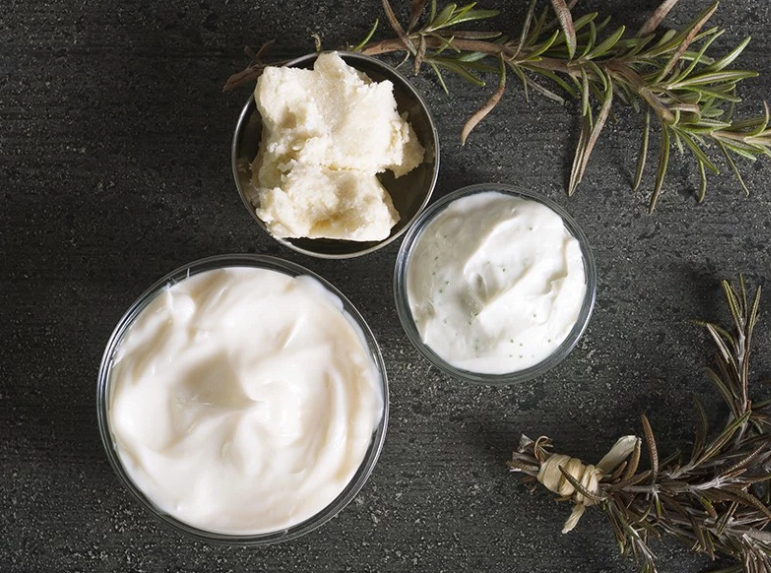
Body Butter vs Lotion

The Science behind your skin care:
With the vast array of body lotions and butters available, making smart skin care choices can be difficult. According to plastic surgeon and author Dr. Michelle Copeland, "it takes two" types of moisturizers to keep skin healthy: "humectant and lubricant." These hydration elements are often present in both body butters and lotions. Therefore, educating yourself about ingredients, knowing how products are labeled, and knowing your skin type will ensure the best results from either type of product.
Industry Labeling:
While ingredients can play a role in classifying a product as either a butter or a lotion, there are no standards to dictate how companies name their products as long as they don't deceive consumers with false labeling and product claims. That means a product is not required to contain any kind of "butter" for it to be called a body butter. It is texture and consistency that primarily determine how a product is classified and marketed to consumers according to licensed esthetician Jeffrie Ann Hall.
Body Butter Basics
Moisturizers known as butters tend to be "heavier and more emollient and have a more luxurious feel as opposed to lotions," says Hall. When moisturizers contain lubricating ingredients, such as shea butter, and natural oils, such as, coconut, olive and jojoba, "they are occlusive or coat the skin to create a barrier between the skin's surface and outside elements." This "barrier" seals in moisture as well as protects the skin from environmental impurities and damage from harsh environments.
Lotion Basics:
Products classified as "lotions" are normally lighter in consistency, have a lower oil content, are not lubricating, and accommodate all skin types. One primary benefit of a lotion is that it can preserve the moisture already in the skin; products that do this are considered humectants. According to Skin Care Rx, "dry skin lacks moisture rather than oil," making humectant products a better choice over creams or oils. Hall says "alpha hydroxy and hyaluronic acid are common humectants in lotion that, after serving as exfoliants, bring the skin's natural water source from the dermis to the epidermis."
Considerations:
Body butter can cause breakouts on oily skin. The occlusive barrier blocks pores, creating a fertile ground for bacteria and oils to accumulate. Try semi-occlusive products like cocoa butter that seal in moisture but allow skin to breathe normally. Lotions in general can be used more frequently than butters because of the lighter ingredients and texture they contain. This is especially beneficial for those who frequently break out. "Know your skin type and make sure to read the ingredients list before purchasing," suggests Hall.
Warning:
Some ingredients commonly found in both body butters and lotions should be avoided, as they may irritate or harm skin. Dr. Copeland says steer clear of lanolin, which can be irritating and extremely heavy, and mineral and coconut oils, which can clog pores. If you have an allergy to nuts, be aware of all ingredients in your skin care products. Silicone and dimethicone are also known to block pores.